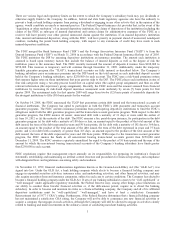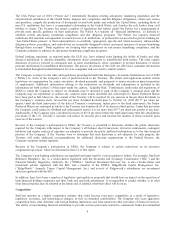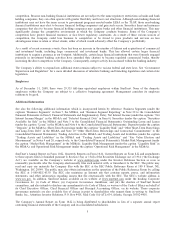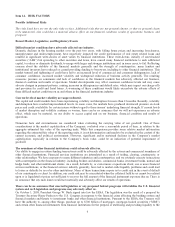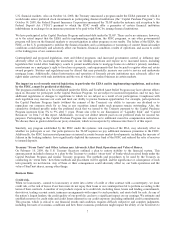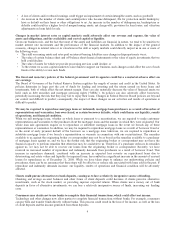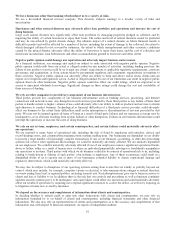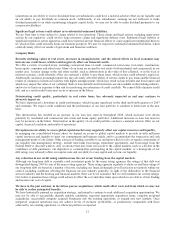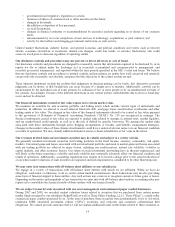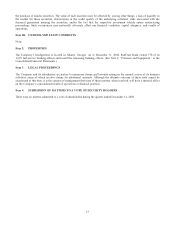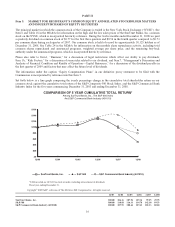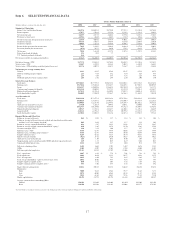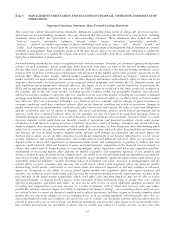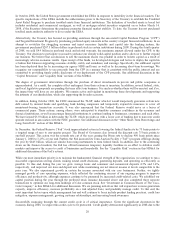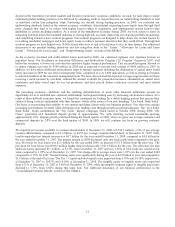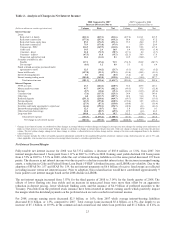SunTrust 2008 Annual Report Download - page 25
Download and view the complete annual report
Please find page 25 of the 2008 SunTrust annual report below. You can navigate through the pages in the report by either clicking on the pages listed below, or by using the keyword search tool below to find specific information within the annual report.Acquisitions involve numerous risks, including difficulties in the integration of the operations, technologies, services and
products of the acquired companies, and the diversion of management’s attention from other business concerns. We may not
properly ascertain all such risks prior to an acquisition or prior to such a risk impacting us while integrating an acquired
company. As a result, difficulties encountered with acquisitions could have a material adverse effect on the business,
financial condition, and results of operations.
Furthermore, we must generally receive federal regulatory approval before we can acquire a bank or bank holding company.
In determining whether to approve a proposed bank acquisition, federal bank regulators will consider, among other factors,
the effect of the acquisition on competition, financial condition, future prospects, including current and projected capital
levels, the competence, experience, and integrity of management, compliance with laws and regulations, the convenience and
needs of the communities to be served, including the acquiring institution’s record of compliance under the Community
Reinvestment Act, and the effectiveness of the acquiring institution in combating money laundering activities. In addition,
we cannot be certain when or if, or on what terms and conditions, any required regulatory approvals will be granted.
Consequently, we might be required to sell portions of the acquired institution as a condition to receiving regulatory approval
or we may not obtain regulatory approval for a proposed acquisition on acceptable terms or at all, in which case we would
not be able to complete the acquisition despite the time and expenses invested in pursuing it.
We depend on the expertise of key personnel. If these individuals leave or change their roles without effective
replacements, operations may suffer.
The success of our business has been, and the continuing success will be, dependent to a large degree on the continued
services of executive officers, especially our Chairman and Chief Executive Officer, James M. Wells III, and other key
personnel who have extensive experience in the industry. We do not carry key person life insurance on any of the executive
officers or other key personnel. If we lose the services of any of these integral personnel and fail to manage a smooth
transition to new personnel, the business could be impacted.
We may not be able to hire or retain additional qualified personnel and recruiting and compensation costs may
increase as a result of turnover, both of which may increase costs and reduce profitability and may adversely impact
our ability to implement our business strategy.
Our success depends upon the ability to attract and retain highly motivated, well-qualified personnel. We face significant
competition in the recruitment of qualified employees. Our ability to execute the business strategy and provide high quality
service may suffer if we are unable to recruit or retain a sufficient number of qualified employees or if the costs of employee
compensation or benefits increase substantially.
Our accounting policies and processes are critical to how we report our financial condition and results of operations.
They require management to make estimates about matters that are uncertain.
Accounting policies and processes are fundamental to how we record and report the financial condition and results of
operations. Management must exercise judgment in selecting and applying many of these accounting policies and processes
so they comply with Generally Accepted Accounting Principles in the United States (“U.S. GAAP”).
Management has identified certain accounting policies as being critical because they require management’s judgment to
ascertain the valuations of assets, liabilities, commitments, and contingencies. A variety of factors could affect the ultimate
value that is obtained either when earning income, recognizing an expense, recovering an asset, valuing an asset or liability,
or reducing a liability. We have established detailed policies and control procedures that are intended to ensure these critical
accounting estimates and judgments are well controlled and applied consistently. In addition, the policies and procedures are
intended to ensure that the process for changing methodologies occurs in an appropriate manner. Because of the uncertainty
surrounding our judgments and the estimates pertaining to these matters, we cannot guarantee that we will not be required to
adjust accounting policies or restate prior period financial statements. See the “Critical Accounting Policies” in the MD&A
and Note 1, “Accounting Policies,” to the Consolidated Financial Statements, in our annual report on Form 10-K for the year
ended December 31, 2008 for more information.
Changes in our accounting policies or in accounting standards could materially affect how we report our financial
results and condition.
From time to time, the Financial Accounting Standards Board (“FASB”) and SEC change the financial accounting and
reporting standards that govern the preparation of our financial statements. These changes can be hard to predict and can
materially impact how we record and report our financial condition and results of operations. In some cases, we could be
required to apply a new or revised standard retroactively, resulting in us restating prior period financial statements.
Our stock price can be volatile.
Our stock price can fluctuate widely in response to a variety of factors including:
• variations in our quarterly operating results;
• changes in market valuations of companies in the financial services industry;
13


